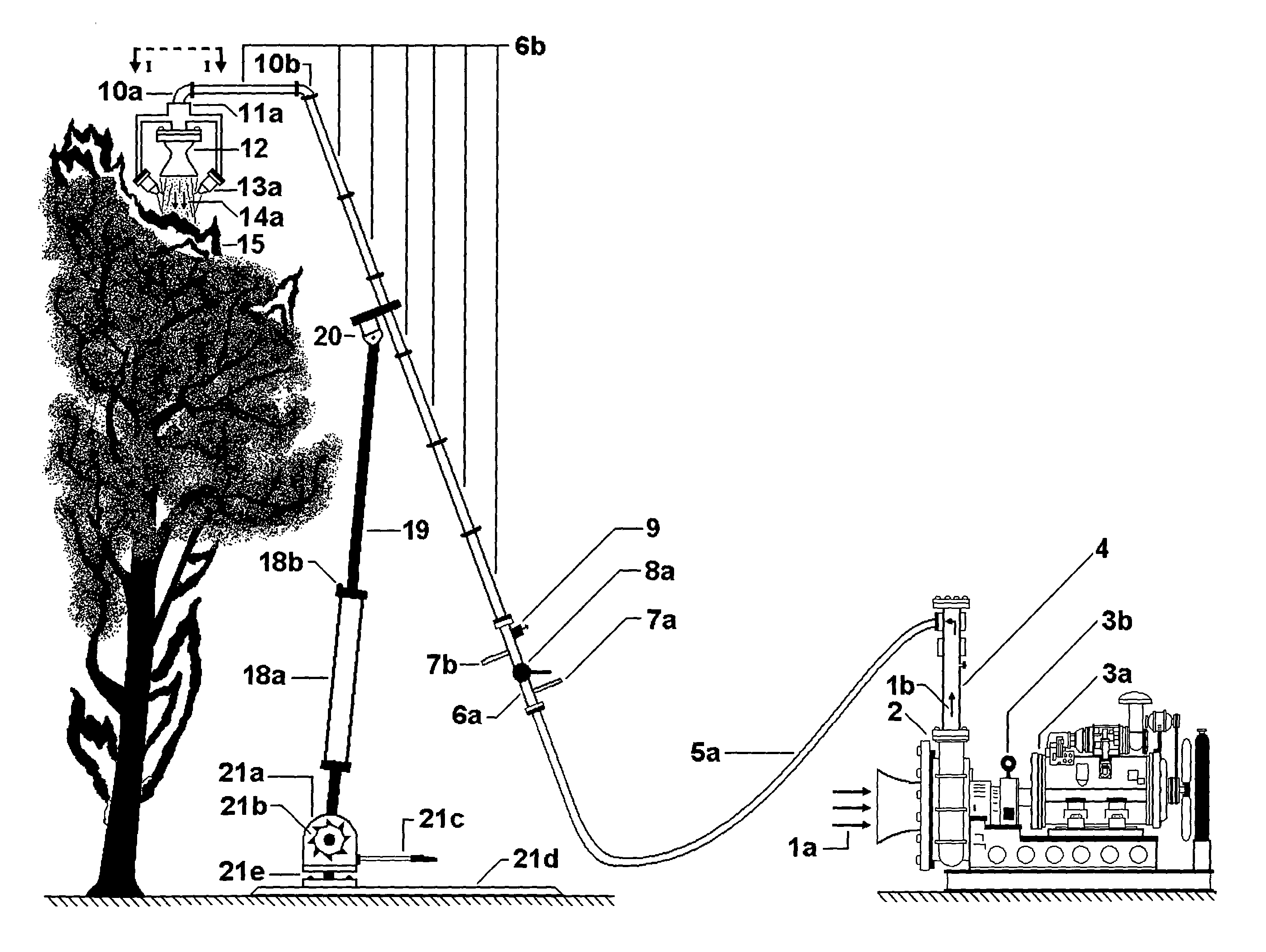Ambient-air jet blast flames containment and suppression system
a technology of containment and suppression system and jet blast flames, which is applied in the field of new fire control systems, can solve the problems of limited design capacity, inconvenient operation, and risk for any community, and achieve the effects of preventing the need to tear down trees, high design capacity, and environmental protection
- Summary
- Abstract
- Description
- Claims
- Application Information
AI Technical Summary
Benefits of technology
Problems solved by technology
Method used
Image
Examples
Embodiment Construction
[0046]The objective of the invention herein presented is to provide method and apparatus to efficiently and effectively suppress flames, through the use of a fire location ambient air compression process, and a subsequent calculated convergent-divergent nozzle thermally protected air flow expansion, to separate the gas mixture components generating a high speed air jet containing water droplets, creating the necessary flames containment mechanisms, and also for the needed aspersion of different chemical agents.
FIG. 1.
[0047]FIG. 1 shows a side vertical or elevation overview of the fire fight scene or location where the complete ambient-air jet blast flames containment and suppression system of this invention is set up and ready for fire fight work.
[0048]This system's process begins when an ambient air mass flow 1a (a mixture of dry air and superheated water vapor) at local atmospheric conditions, enters the suction of the compressor unit 2 (centrifugal or axial rotors), wherein, said...
PUM
 Login to View More
Login to View More Abstract
Description
Claims
Application Information
 Login to View More
Login to View More - R&D
- Intellectual Property
- Life Sciences
- Materials
- Tech Scout
- Unparalleled Data Quality
- Higher Quality Content
- 60% Fewer Hallucinations
Browse by: Latest US Patents, China's latest patents, Technical Efficacy Thesaurus, Application Domain, Technology Topic, Popular Technical Reports.
© 2025 PatSnap. All rights reserved.Legal|Privacy policy|Modern Slavery Act Transparency Statement|Sitemap|About US| Contact US: help@patsnap.com



